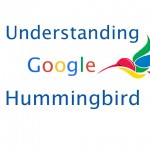You may be aware that the World’s premier search engine goes for a regular update of its search engine algorithm. This change is necessary to update the process of search for a particular keyword and related websites. Google’s aim is to degrade inferior quality sites and promote sites of higher quality which have higher relevance and significance to the searched keywords. In terms of Search Engine Optimization, Google has almost gone for a sea change. The option of submitting links to a large number of websites to promote the presence of a webpage, irrespective of the content, is a matter of the past now. Mindless link building, creating tags, and blogs full of mindless keywords to promote the page ranks are getting dishonored now. It has led to the diminished importance of the stereotype rules of increasing a Page Rank.
Differences of Panda over Older Algorithms
What is Google Panda? Well, it is no new tool, software or application launched by Google. It is simply the name given to the all new algorithm adopted by Google to bring a change to the age-old norm of link building for search engine optimization. Just when companies and organizations were going mad about employing resources to increase the page ranks of their websites to remain in the race and continue to top the charts when searched with their pre-decided set of keywords, Google announced the launch of the new algorithm that changed how the master of search engine would grade a website or a web page. Google, having the monopoly in the search engine fraternity continues to enjoy the privilege of calling the shots when it pleases, realized that more and more sites were using the SEO as a means of upgrading their page ranks even when their content was not half relevant to the matter or subject being researched. The same is the outcome with websites which are full of junk advertisements and lacks the relevance and content in accordance with the keywords that are fed on the web page. Therefore, Google had to bring in a change in the way it rated the sites based on which one would get the outcome of a search made on its search engine. Google panda is the name given to the latest algorithm used by Google to rate web pages. It is aimed at providing more accurate search result with the most relevant sites at the top of the result page, and moving all irrelevant sites down the page. Therefore, all previous efforts that had been made to increase a page rank would go down the drains unless your website is compliant of the new rules and the content relevant.
The New Algorithm of Google is named after Navneet Panda, the engineer who looked at the similarities of different websites, regarding their quality. The announcement of Google Panda was first made in February 2011. This change on the algorithm suddenly affected a huge number of websites and their position in the search result. The position of almost 12% of websites had changed at that point of time. Since then of course, a lot of feedback was given and plenty of revisions made to the original algorithm to refine it. It took effect globally in April 2011. For the affected sites, there was a continuous search to unearth the basis of the new algorithm that determines the position of a page when searched with a particular keyword. Receiving several feedbacks, Google published a blog with a list of bullet points suggesting what counts as a high quality site so people can understand Google’s mindset.
On common feedback received with the introduction of the Panda Algorithm is that Google has failed to focus on web pages which contain specific and valuable information, known as ‘evergreen content’. Owing to the nature of these topics, most information around these subjects is old and remains true without needing constant update. They also contain continuous and long thread of information, which are equally crucial during research of these topics. However, with the new algorithm, Panda has reduced the visibility of these so-called old websites to replace them with newer content. Google seems to have neglected the importance of these web pages showing older dates, and newer web-pages are topping the search results due to their comparatively newer content. This is impacting the research as, for ‘evergreen content’, most of the new sites with new information are superficial and more often do not serve the purpose.
Despite several versions of Panda being introduced from January this year, further refinements need to be implemented to take care of these concerns. Over a period of time, a more advanced version of Panda may address this problem in the near future. As per the technical terms, every update to the algorithm is aimed at a ‘data refresh’. In other words, right from the launch of Google Panda, while several websites have lost their position and their older page ranks, others have moved up. Panda continues to ‘punish’ those over-optimized websites, and award those which deserve to be at the top with their relevant content.
Lessons have been learn, and conclusions drawn. The new mantra is just following what Google wants you to follow.
Few things to keep in mind are, first thing, the keyword density of your website should anywhere between 5 to 8%. Anything more than that could lead to your website being termed as a degraded site which has a set of irrelevant keywords populating the content. It involves nothing but a sort of self assessment. Next point is watch out for the relevance of the keywords you put up on your site. Popular websites including Forbs have not been spared and have lost their ground as they were appearing on search results with key words which are abused and used unscrupulously by other irrelevant websites. Finally, ensure that your website does not contain hyperlinks that lead to sites that are either non-existent or are broken links. The presence of these would severely impact the quality of your webpage and may well be treated as a poor quality website that has received an inflated ranking with continued malpractice.
Good luck with your website rank! It calls for a fresh start to optimize existing sites in accordance with the rules laid down by Google Panda, until we have more news on the next algorithm change launched by Google.


 (4 votes, average: 4.75 out of 5)
(4 votes, average: 4.75 out of 5)







